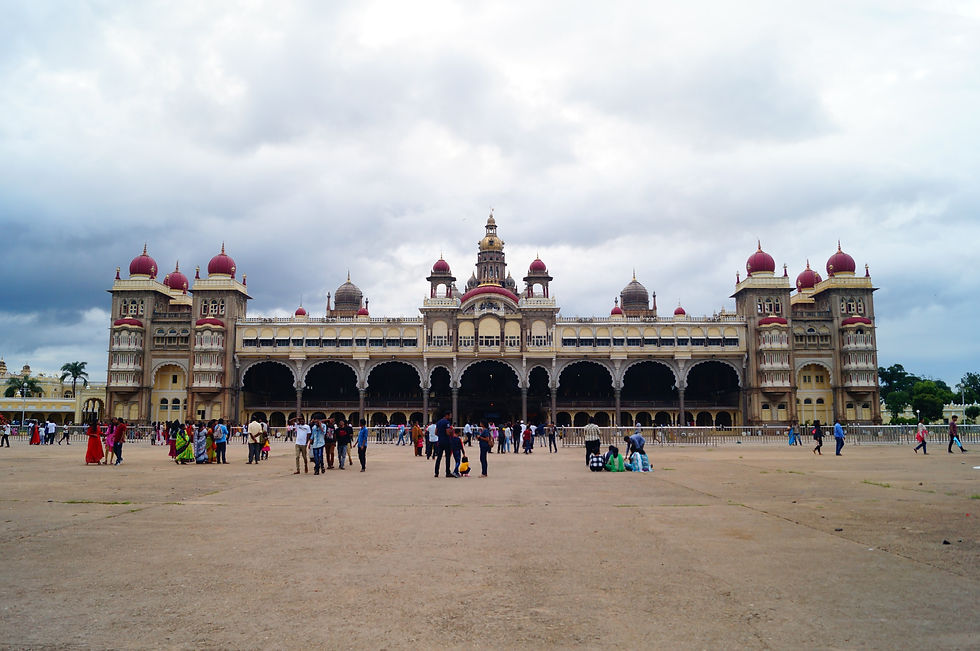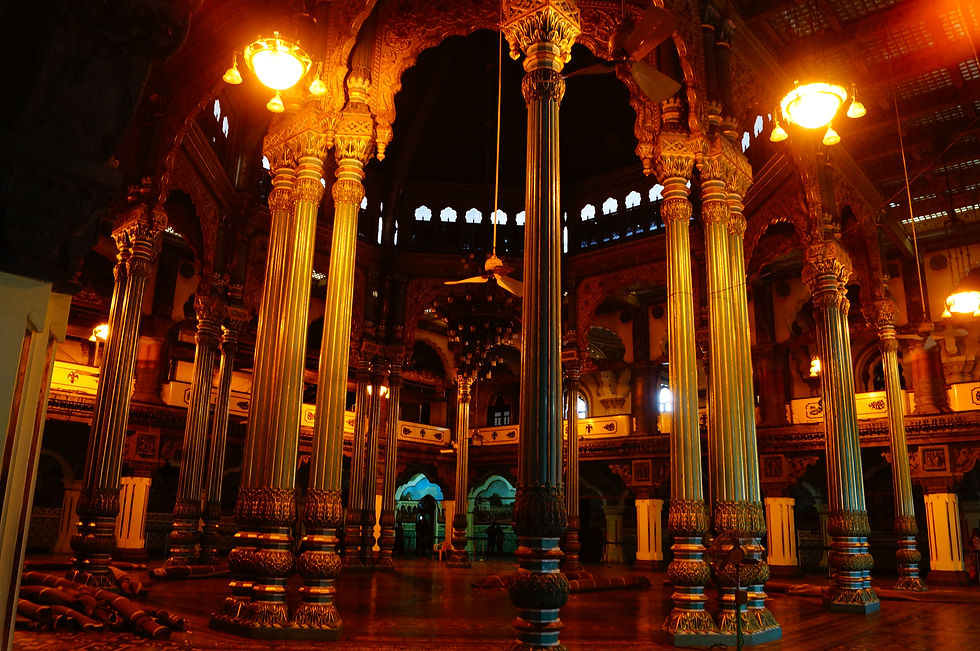Royal Edifices of Mysuru
- Shradha Nagarajan

- Dec 7, 2020
- 2 min read
Diwali of 2019 brought with it a chance for me to visit my hometown, Mysore. The 3 day trip was centred around art, architecture and food. What more can one ask?!

So we began with the one and only, Mysore Palace, built in 1912 by Henry Erwin. The grandeur that it imposed on the viewer gives a hint at the opulent lifestyle of the royalty of the Wadiyar (pronounced wodeyar or odeyar) Dynasty.

The interior of the palace was a feast to the eyes, with elements of hindu, islamic, rajput and gothic architecture combined harmoniously. Exquisitely carved pillars and archways with ornate patterns, and an open courtyard with spiral staircases, were all preserved religiously. Rooms along the corridors were a museum of the royal life. Paintings, furniture, clothes and daily life elements made of expensive materials such as ivory combs were displayed in the palace for visitors to gaze upon.
Surrounded by temples, the palace is currently owned by Maharani Pramoda Devi Wadiyar but is governed by the government of Karnataka. At 7 pm every evening (except on Sundays and major holidays), a lightshow is organised at the Mysore palace where the entire palace complex is lit with orange lights for an hour, making it look encrusted with carnelian.
Another eye-catching attraction was the palace of Tipu Sultan. This summer palace of the Tiger of Mysore took 10 years to build, and its features do full justice to it. Nestled amidst a large garden and floral foliage, this structure, though smaller in size than the Mysore palace, is no less in term of architectural beauty. The double storied abode of Tipu Sultan contains delicately painted patterns unlike the bold elements of the Mysore Palace.

Grayed and frayed with time, yet distinct and demanding attention, the variety of colours, patterns and prints on the walls, balconies, pillars and literally every nook and cranny, which would have otherwise overwhelmed the eye, only add to the beauty of the palace in this case. The passages and rooms within the palace were arranged with coins, portraits, medals, and sketches depicting scenes from the freedom struggle of India.
The third and final destination was the Jayachamarajendra art gallery at the Jaganmohan palace. Art is an important source of history and its preservation at this gallery has done justice to its historic value. The palace contains paintings by artists such as Raja Ravi Varma and the Tagore brothers as well as S.L. Haldankar's 'Glow of Hope' (alternatively called 'Woman With the Lamp'). The artwork ranged from Mughal murals to depictions of wars between Tipu Sultan and the British army.
Apart from paintings, the gallery also contained antiques such as Grandfather clocks, vintage furniture such as couches and recliners, ivory showpieces and even a manuscript covered with ornately carved sandalwood. However, photography was prohibited within the premises of the gallery and thus I could not add any here. The rich lifestyle of the Wadiyars will remain vivid in my memory till I visit again.






















Comments